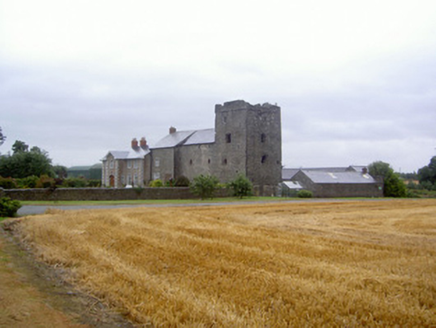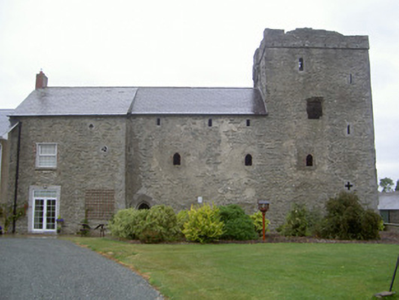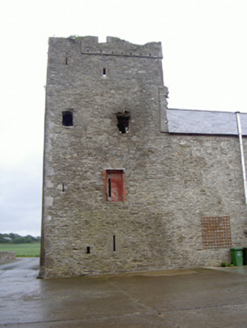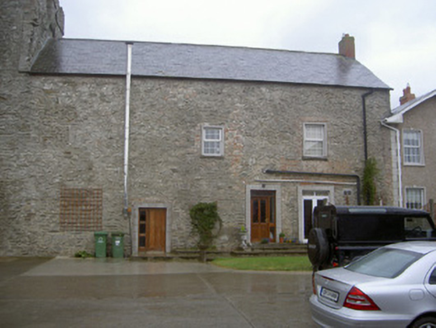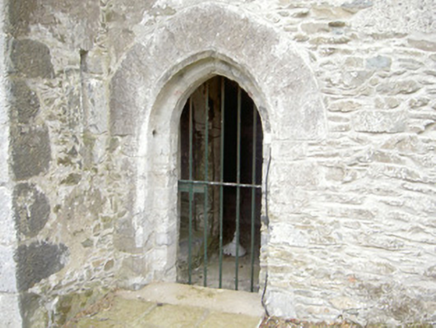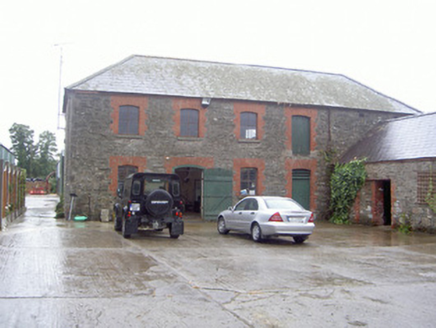Survey Data
Reg No
13901808
Rating
National
Categories of Special Interest
Archaeological, Architectural, Historical, Social
Original Use
Castle/fortified house
In Use As
House
Date
1500 - 1600
Coordinates
305561, 286245
Date Recorded
28/07/2005
Date Updated
--/--/--
Description
Detached multiple-bay three-storey tower house, built c. 1550, extended c. 1650. Rectangular-plan, tower to east. Pitched slate roof, clay ridge tiles, red brick corbelled chimneystack, c.1970, half-round gutters on corbelled eaves course, circular cast-iron downpipes; corbelled stone parapet to tower. Random rubble stone walling, stone quoins, stone string course to parapet. Pointed arch, square-headed window openings, some uPVC windows; arrow loops to north, south and east including decorative arrow loop to first floor south elevation, stone surrounds. Pointed arch door opening to south, dressed limestone voussoirs, steel gate; square-headed door openings to north, smooth rendered surrounds, uPVC and timber and glazed doors,. Two-storey house directly abuts castle to west. Single- and two-storey outbuildings to north forming courtyard c. 1840; hipped and pitched slate roofs, random rubble stone walling, segmental-headed window openings, red brick surrounds, painted timber casements; segmental- and square-headed door openings, red brick surrounds, painted timber vertically timber sheeted doors and metal roller shutters.
Appraisal
Athclare Castle is typical of defensive residential architecture of the period. This sixteenth-century tower house was built by the Barnewell family and later extended in the seventeenth century, the plain extension is distinguished by the stocky tower to the east. It continues to be partially in residential use and the later stable yard to the north indicates that the site has been adapted over the centuries to accommodate those living in the castle. The decorative carving to some of the small window openings is worthy of particular note and Athclare Castle is a site of importance to the heritage of County Louth.
